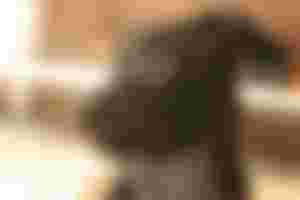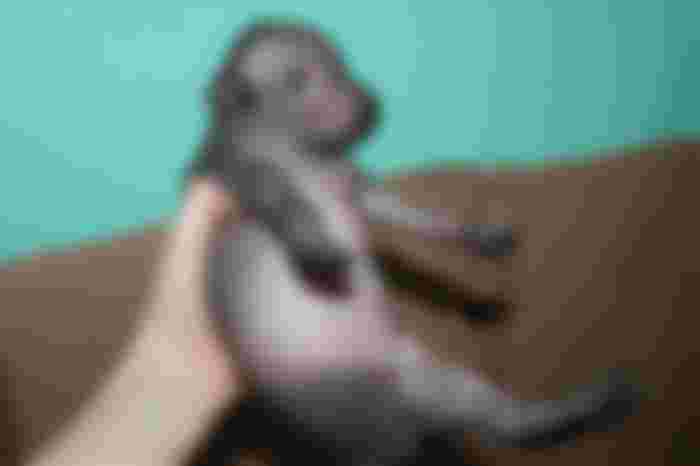
Most of the colonial descriptions provide data in Nahuatl. In total, thirteen names are known for "dog" in that language: itzcuintli, chichi, xochiocoiotl, xochcóyotl, tetlamin, tetlami, tehui, tehuízotl, tlalchichi, techichi, xoloitzcuintli, tepeitzcuintli and itzcuintepozotli (Valadez, 1994: 3). Of course, generic terms for "dog" are also known in different languages. It is worth mentioning that the term tepeitzcuintle “cerro dog” refers to a rodent (Cuniculus paca) and that otters are also sometimes conceived as aquatic dogs. Apparently, itzcuintli is associated with the meaning “sharp” (Seler, 2008) and groups together animals with a sharp bite. Therefore, itzcuintli does not mean "dog" in a direct or literal way, but it happens that the dog is the best known animal with a sharp bite.
This is how itzcuintli is known for the common dog and xoloitzcuintli for hairless dogs. However, other names are also known, for example pèco-xolo, used among the Zapotecs (Beyer, 1908). This Zapotec name is created by adding the particle xolo of Nahuatl origin to the general term pèco “dog”. Both xoloitzcuintli and pèco-xolo mean "monstrous dog." The Mayan names bil, ah-bil for hairless dogs and ix-bil are also known, specifically for females (Valadez and Mestre, 1999: 77).
Other meanings of the xolo particle are "wrinkle", "servant", "rare" and the translation as "rare dog" has been proposed assuming that nudity would imply the concept of rarity for Mesoamerican peoples (Valadez and Mestre 1999: 77) . Xólotl is also the name of a god. Nahuatlato speakers from southern Veracruz understand the particle "xolo" as something "larval" or "incomplete" (García de León, personal communication). While xoloitzcuintle is understood as a "running dog" by the Nahuatlato inhabitants of Chilpancingo, Guerrero. An informant who provided this meaning in 2011 mentioned:
“When I was a child and went to the Chilpancingo zoo, I saw the xoloitzcuintles and I imagined them running on a plain, and for us that means xoloitzcuintli, the dog that runs. When someone sends you for something and wants you to hurry he says: Xi xolo! ... the dog that runs, it is not that he runs because he is fearful, it is because of his great physical condition to walk in the field; that's how I consider it "
According to the same informant, the particle xolo is equivalent to running, ni xolo (I run), ti xolo (you run) and the particle xi corresponds to the imperative. The name of Xólotl was also mentioned, emphasizing his escapades when making his transformations in myths.
The acceptance of the modern name of the breed as "XOLOITZCUINTLE" is explained in two ways. In the first place, the term “xoloitzcuintli” was the name that the pioneers of the breed and the first breeders knew, but its prevalence also implies a desire to relate the breed both to the god Xólotl and to the Mexica themselves, understood as the central power of the past. Of all the possible ancient names to choose from, the one that best suited the exoticist and nationalist ideals of the moment was chosen.

From a literal linguistic perspective, in colloquial Nahuatl, the term xoloitzcuintli encompasses only the naked form and the term itzcuintli would refer to a canine form with fur. However, this classification by external appearance does not imply the separation of individuals into two races. Furthermore, using such terminology only leads to discrimination of the hairy shape as it is conceived as a separate entity. Instead, it is known that biologically, the two forms are closely related and indissoluble. In this sense, it is acceptable to continue calling the modern breed as XOLOITZCUINTLE, understood as a Castilianized NEOLOGISM that designates a current canine breed, which groups two forms and therefore, there are xoloitzcuintles with hair and without hair, even though the xoloitzcuintli as native category just be bald.
At present, the Nahuatl language is spoken in a vast region that includes localities located from Durango to El Salvador. The concept of Nahua culture is based on this common linguistic heritage and crystallized from the foundation of social, religious, political and economic institutions (León-Portilla, 2011). The original appearance of the hairless dogs was not necessarily linked to a Nahua people. Various groups appropriated this animal and incorporated it into their culture. However, towards the 16th century it is clear that this animal had been inserted mainly into the worldview, not only Mexica, but Nahua in general.
In this sense, it is important to highlight that various questions regarding the xoloitzcuintle probably find a better answer among non-central Nahua peoples, for example the Nahua of Guerrero, who have shared the Balsas Basin with this animal since ancient times, or the Nahua peoples of El Salvador, who in the Sierra de Apaneca have also conserved it until recently (Villacorta: 2008).
The xoloitzcuintle receives various names in contemporary contexts. First of all, it is common to use only the particle "xolo". In other languages, terms equivalent to "Mexican hairless dog" are commonly used: "Mexican hairless (dog)", English; “Mexikansk nakenhund”, Swedish; Мексиканская голая собака (meksikanskaya galaia sabaka), Russian; meksikonkarvatonkoira, Finnish. It highlights both the emphasis on nudity and the resistance to using a term in Nahuatl, possibly due to difficulties in its pronunciation, which is understandable at the colloquial level but not at the level of the canophilic entities, which should respect the original name of the race. Inside the canophilic entities a variant with "Q" has appeared: "Xoloitzquintle", which represents an error.

